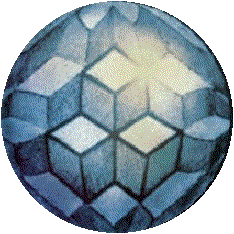
Conference Papers Online
Session 6: Working with Knowledge - Coming Back to and Using the Information Held in Records
Bringing up Bright Sparcs - the many lives of an archival database
Australian Science Archives Project
discontents
Use of Bright SparcsWhen Tim put Bright Sparcs onto the Web he saw it as something that would be constantly evolving. He hoped that people accessing the site would let us know if we had any information wrong and provide additional details for incomplete entries. As expected, a lot of the extra information has been provided by descendants who were excited to see their ancestors on the Web, but there has also been a pleasingly large amount of feedback from researchers. Occasionally people contact us suggesting that we add particular scientists to Bright Sparcs. If they meet the criteria for inclusion weíre happy to oblige, particularly if biographical details have been provided. People also appreciate that Bright Sparcs is more than just a biographical resource and send bibliographical information to be added to our bibliography of the history of science in Australia. Given the size of the biographical component of Bright Sparcs, currently 3,054 entries, there have been very few errors detected and they are generally typographical, as in the case of the man who was born in 1864 and arrived in Australia in 1854 (it should have been 1884) or incorrect assumptions on my part, such as transforming Lesley Rogers into a man. As nearly 94% of the entries in Bright Sparcs are for men, perhaps this lapse is understandable, though the middle name Joy really should have given me a clue! More interesting are the entries on people whose published biographical details are incorrect, for example, John Calvert. For a start he is generally believed to have been born in 1811 when in fact he was born in 1825. This makes his claim to have been prospecting for gold in 1834 rather dubious. The remainder of his life story is similarly full of inconsistencies. As a result of an email from a researcher working on Calvertís biography his entry has been radically overhauled. Occasionally odd little historical facts come to light. One of the descendants of Erik Gustav Edelfelt wrote stating that we had some of our dates wrong. The information for Edelfelt was taken from the Australian Dictionary of Biography, which is very carefully researched. The family, being some sort of nobility, have a very full family tree and as our information didnít correspond with theirs they have decided that "our" Edelfelt was probably a sailor who jumped ship in Australia and took the name of the shipís captain. One thing we hadnít counted on was the variety of questions that people would send to us. As you would expect there are a large number of genealogical inquiries, which are usually simple to answer and involve faxing or mailing any extra information we have on file. While I have the file out I usually take the opportunity to upgrade the entry in our database, so these inquiries actually serve quite a useful purpose. Similarly, I am more than happy to provide extra biographical information to school students for their assignments. Less welcome, however, are cries for help like the following:
I have a test tommorow and the subject is nuclear chemistry. One of the questions is as follows: What would have happened if Rutherford would have used aluminium foil in place of gold in his experiment?. please reply as soon as possible!!!!!!!!!!!!!!!!!?. At least that request was scientifically orientated. More puzzling was this one:
Maybe you can help me find the name of the poem by John Dryden which contains the lines "I am wounded but I am not slain, Iíll lay me down to bleed a while, then rise to fight again."? I told this young lady to try her local library! We also receive a significant number of more general research queries, such as the one from the person researching and writing Australian scientific achievements, birthdays of famous scientists and significant discoveries during science week for radio broadcasts of On This Day. On the whole the type of interaction which Tim hoped for has taken place. Response to the site has been overwhelmingly positive and Iíd like to close by quoting a recent email:
I am writing to thank you for the wonderful online database "Bright Sparcs". I am a doctoral student in the history dept at Monash University, and I am writing a biographical study of two C19th Melbourne families including the Sutherland family which included Alexander, George and William. When I did a search on them on "Bright Sparcs" imagine my delight in finding extensive references to archival and published material - with accurate information as to how to actually access and use this material. This is scholarly/archival web publishing at its best and most useful - thank you!?
|

Published by: Australian Science and Technology Heritage Centre on ASAPWeb
Comments or questions to: ASAPWeb
(asapweb@asap.unimelb.edu.au)
Prepared by: Helen Morgan
Graphics by Lisa Cianci
Date modified: 8 October 1999